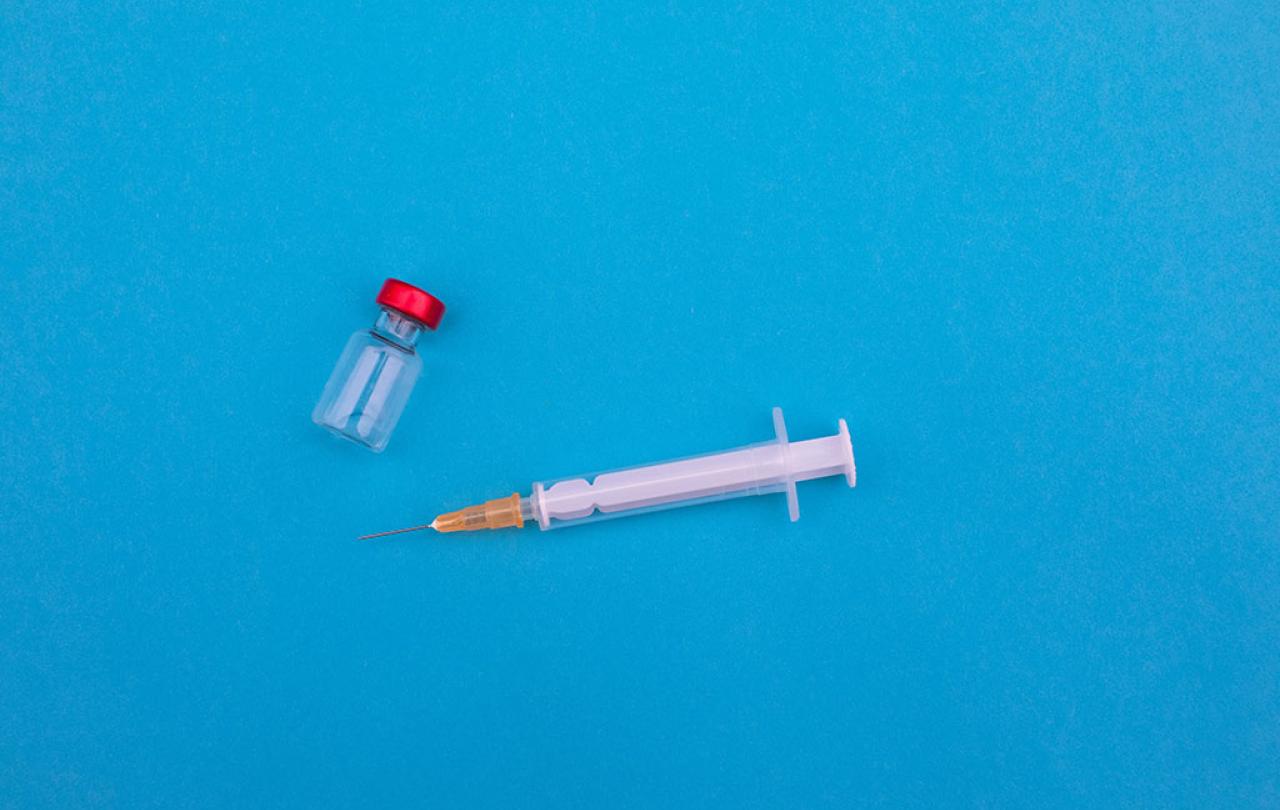
In the coming weeks and months, MPs at Westminster will debate a draft bill which proposes a change in the law with regards to assisted dying in the UK. They will scrutinise every word of that bill. Language matters.
Reading the coverage, with a particular interest in how such changes to the law have been operationalised in other countries, I was struck to discover that the term in Dutch for dying by means of a fatal injection of drugs is “de verlossende injectie.” This, when put through the rather clunky hands of Google translate, comes out literally as either “the redeeming injection” or “the releasing injection.” Of course, in English the term in more common parlance is “lethal injection”, which at first glance seems to carry neither of the possible Dutch meanings. But read on, and you will find out (as I did) that sometimes our words mean much more than we realise.
Writing for Seen & Unseen readers, I explained a quirk of the brain that tricked them into thinking that the word car meant bicycle. Such is the mysterious world of neuroplasticity, but such also is the mysterious world of spoken language, where certain combinations of orally produced ‘sounds’ are designated to be ‘words’ which are assumed to be indicators of ‘meaning’. Such meanings are slippery things.
This slipperiness has long been a preoccupation for philosophers of language. How do words come to indicate or delineate particular things? How come words can change their meanings? How is it that, if a friend tells you that they got hammered on Friday night, you instinctively know it had nothing to do with street violence or DIY? Why is it that in the eighteenth century it was a compliment to be called ‘silly’, but now it is an insult?
Some words are so pregnant with possible meaning, they almost cease to have a meaning. What does “God” mean when you hear someone shout “Oh my God!”? Probably nothing at all, or very little. It is just a sound, surely? And yet no other sound has ever succeeded in fully replacing it. We are using the term “God”, as theologian Rowan Williams points out in his book The Edge of Words, as a “one-word folk poem” to refer to whatever we feel is out of our control.
Both of these first two interpretations look at death, in some sense, ‘from the other side’ – evaluating the end of someone’s life in terms of speculation over what will happen next.
This idea of an injection being verlossende seems to me to be the opposite. I find myself hearing it in four different (and not mutually exclusive) ways, each to do with taking control of this very uncertain question of dying. The first, releasing, sounds to me like an echo of the neo-platonic ideas that still infuse public consciousness about what it means to be dead. As we slimily carve our pumpkins for Halloween and the children clamour to cut eyeholes into perfectly good bedsheets, we see a demonstration of society’s latent belief that humans are made up of body and soul, and that at death the soul somehow leaves the body and floats into some unknown realm (or else remains, disembodied yet haunting). If we translate verlossende as releasing then we capture that idea – that of the soul, which longs to be at peace, trapped inside suffering, mortal flesh.
Google’s second suggestion for verlossende was redeeming. This could be heard theologically. Christians believe in eternal life, that the death of this earthly body is only the start of something new – a life where there will be no crying or pain, and people will live forever in the glorious presence of God. In the bible, the apostle Paul encourages those who follow Christ to trust that they have been marked with a ‘seal’, meaning that they are like goods which have been purchased for a price, and that God will ‘redeem’ this purchase at the appointed time. Death, therefore, is not a fearful entering into the unknown, but a faithful entering into God’s promises.
Both of these first two interpretations look at death, in some sense, ‘from the other side’ – evaluating the end of someone’s life in terms of speculation over what will happen next. But there is the view from this ‘side’ also. We do not need to speculate about what death means for some of those who experience acute suffering due to terminal illness, and who wish to hasten the end of their lives because of it. They too might want to speak of a releasing injection or a redeeming injection – given that both terms hint at the metaphor of life as a prison sentence. To be in prison is to have one’s rights and freedoms severely limited or entirely taken away. It is not uncommon to hear a sufferer refer to incapacitating illness as being ‘like a prison sentence’, and one can empathise with the desire to have the release date set, back within the sufferer’s control.
This is the strange power and pregnancy of words – verlossende is able to carry all these meanings or none of them. Until I began researching this article, I had always assumed that the English term, lethal injection, simply meant an injection of some substance that is deadly. This is how the term is commonly understood, therefore, in a sense, this is its meaning. Yet, when I came to consider the possible origins of the word, I realised its likely etymology is from the Greek word lēthē, meaning ‘to forget’. In the Middle Ages, if something was lethal it caused not just death, but spiritual death, placing one beyond the prospect of everlasting life. By contrast, something could be fatal, meaning only that it brought one to one’s destiny or fate.
With this in mind, as we try to speak clearly in the assisted dying debate, the term fatal injection might be a more precise way to describe this pathway to death that is in want of a name. After all, whether you believe in an afterlife or not, dying is everybody’s fate, and I can see that choosing to take control of one’s fate is, for anyone, an act of faith with regards to what comes next.
This article was part-inspired by Theo Boer’s original article Euthanasia of young psychiatric patients cannot be carried out carefully enough, in Dutch newspaper Nederlands Dagblad. Theo is a professor of health ethics at the Protestant Theology University, Utrecht.
Read the original article in Dutch or an English translation below. Reproduced by permission.
Euthanasia of young psychiatric patients cannot be carried out carefully enough
Theo Boer
How is it possible to determine that patients who have suffered from psychiatric disorders for five or ten years and who are between the ages of 17 and 30 have ‘completed their treatment options’, wonders Theo Boer. It also conflicts with perhaps the most important task of psychiatrists: ‘offering hope.’
The patients we are talking about now are not physically ill and therefore do not have the ‘comfort’ of an impending natural death.
A letter was recently leaked in which leading psychiatrists ask the Public Prosecution Service to investigate the course of events surrounding euthanasia of young psychiatric patients.
One death mentioned by name concerns seventeen-year-old Milou Verhoof, who received the redeeming injection from psychiatrist Menno Oosterhoff at the end of 2023. It will not have escaped many people's attention how much publicity the topic has received in the past year or so. Together with a colleague and a patient (who later also received euthanasia), Oosterhoff wrote the book Let me go.
The tenor was: it is good that euthanasia is possible for this group of patients, the taboo must be removed, their suffering is often terrible, they have already had to undergo countless 'therapies' without effect - can one time be enough?
Or would we rather have these patients end their lives in a gruesome way? And who really thinks that psychiatrists make hasty decisions when they decide to comply with a euthanasia request?
To be clear: we are talking about something completely different than what has been called 'traditional euthanasia' for years: euthanasia for physically ill patients with a life expectancy of weeks or months. Given the excellent palliative care that has become available, such euthanasia will actually be less and less necessary in 2024.
Panic
No, the patients we are talking about now are panicky, anxious, confused, depressed, lonely, often unemployed, poorly housed, without prospects. But they are not physically ill and therefore do not have the 'comfort' of an impending natural death.
I have heard several of them say: if only I were terminal, then euthanasia would not be necessary. The fact that there is now attention for this group of patients, with whom we in our hurried and solution-oriented society know so little how to deal, is a gain. At the same time, I am happy with the leaked letter. You can criticize Oosterhoff's procedural approach ('why not an ethical discussion instead of a legal one?'), the lack of collegiality, this perhaps underhanded action ('why did you go straight to the Public Prosecution Service?'). But in my opinion, the letter writers are definitely hitting the mark with this crooked stick. Firstly: how is it possible to determine that patients who have suffered from psychiatric disorders for five or ten years and who are between the ages of 17 and 30 have ‘completed their treatment options’ (a criterion from the Euthanasia Act)?
Review Committee
Nobody disputes that their suffering is unbearable. At the same time, I know from my time on a Regional Euthanasia Review Committee that an illness becomes unbearable when all hope is gone.
A psychiatrist who gives euthanasia to a young adult is also undeniably sending the signal that, like his patient, he has given up all hope of improvement. That is actually risky, because even patients who have suffered for years sometimes recover and, moreover, our brains are not fully developed until we are 25. But it also conflicts with perhaps the most important task of psychiatrists: offering hope. In their training, the risk of transference-counter-transference is consistently pointed out: a patient takes his therapist with him into despair, the psychiatrist transfers those feelings to this and other patients: ‘this kind of suffering is untreatable and cannot be lived with’.
In the recent NPO television documentary A Good Death we see an embrace between a psychiatrist and her emotional patient. In doing so, this psychiatrist offers a unique form of involvement. But does she provide sufficient resistance to the cynicism, despair and negative vision of the future that is also widespread outside psychiatry?
Sensible decisions?
That brings me to a second objection: is it sufficiently recognised how much a psychiatric illness can affect someone’s ability to make sensible decisions? The hallmark of many psychiatric illnesses is a deep desire to die and an inability to think about it in a relative way. As a result, many are unable to think in terms of a ‘possibly successful therapy’.
Boudewijn Chabot
The main character in the book Zelf heeft by Boudewijn Chabot, Netty Boomsma, responds to Chabot's suggestion that there might be a life after depression: 'Yes, but then I won't be it anymore.' She wants to go down with her depression. I know differences. The people with a death wish who remark about a possible therapy: ‘I hope it is not effective, because then I will have to go through it again.’
Another hurdle
If a second psychiatrist is consulted and, for example, suggests trying one or two more therapies, many patients see this as yet another hurdle on the road to euthanasia. They do not see it as a serious opportunity to be able to cope with life again. There are no easy answers here. Nor are pillories appropriate. But let euthanasia remain complicated here, and let us continue to look for hope.
Reproduced by kind permission





